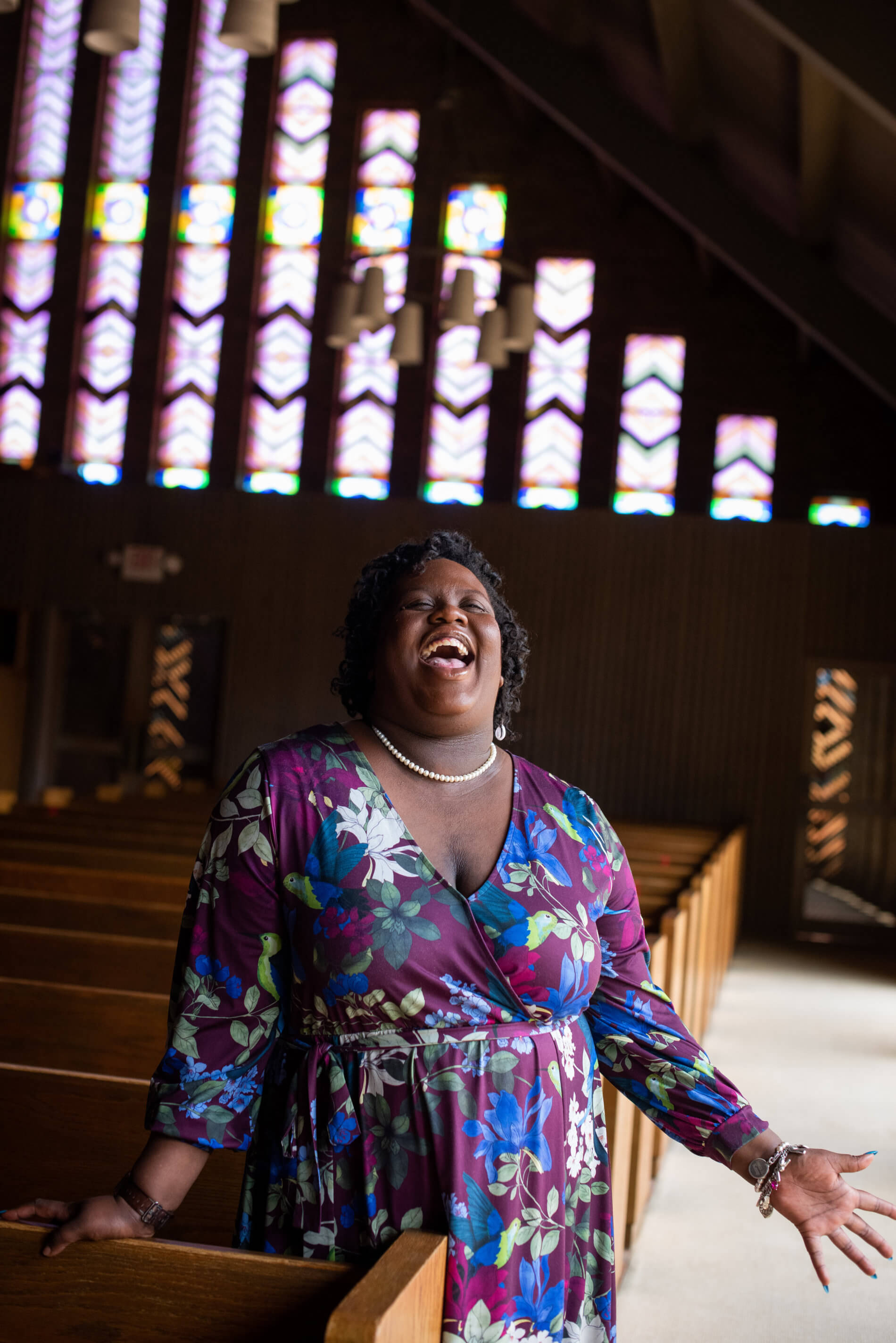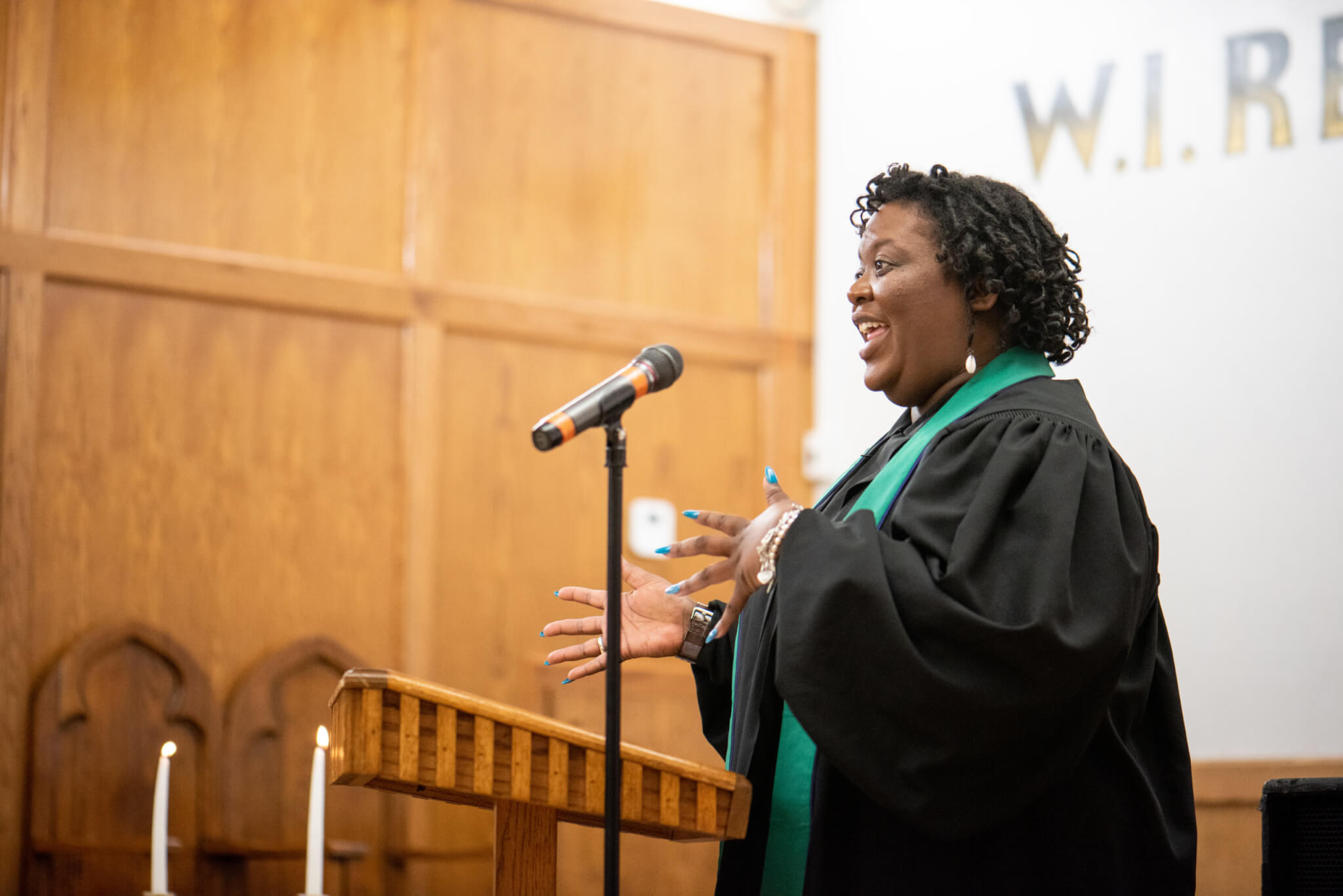
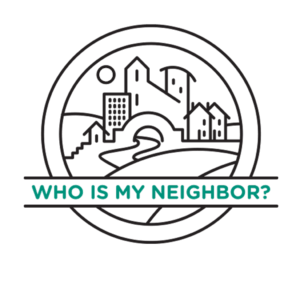
Every February, Reverend Jessica Kemp teaches the kids from her church youth group how to identify with the power of the past.
Antioch Missionary Baptist Church is a large, historic Black church located in the heart of San Antonio’s East Side. Kemp says the centerpiece of their Black History Month program is a “living museum” where “our kids get to choose who they want to be.”
Most choose familiar figures known to just about anyone. “We will always have the Big Three,” Kemp says with a chuckle. “Harriet Tubman, Martin Luther King Jr., Rosa Parks.”
But next year, Kemp, Antioch’s minister of children, youth, and young adults, plans to mix things up. Working with the San Antonio African American Community Archive and Museum, Kemp will teach the kids about local legends—leaders from this very neighborhood who struggled for a better, more just, and altogether more whole San Antonio.
Leaders like Rev. S. H. James, the pastor and civil rights leader who fought for fair employment laws. Or Artemisia Bowden, the pioneering educator who took the helm of the all-Black St. Philips Day School in 1902 and, over the next half century, helped build it into a college that is still thriving today.
Next year, says Kemp, she wants her youth group kids to hear about these local heroes—and aspire to be like them. “This gives us an opportunity to expose our children to people that are from their community,” says Kemp. “San Antonio [people] that affect their lives today, and that they may not even realize [existed].”
What Kemp is doing holds a lesson for all of us: the value of being exposed to people whose lives and stories impact our own, especially those whom we may not have yet noticed. In other words, exploring the question asked in Luke 10: Who is my neighbor?
Kemp came to know the stories of these San Antonio leaders through her experiences with a Narrative Change Cohort—one of several such cohorts the H. E. Butt Foundation is running as part of a storytelling program focused on our neighbors across San Antonio, especially families and children living in neighborhoods that have suffered from a legacy of institutional neglect.
Each Narrative Change Cohort brings together people from different backgrounds. Kemp’s cohort is unique in that everyone in it is a minister: 11 different pastors from 10 different ZIP codes in the city, each ministering in a unique cultural setting, from affluent congregations to mixed-income and low-income areas stretching across the city.
Kemp says she felt a bit skeptical about the cohort idea, but she agreed to join out of a desire to connect with other pastors and see where she could add value to her own setting. “I was really thinking: What can I glean from this to benefit our community?” she said. “That’s what drew me into it initially.”
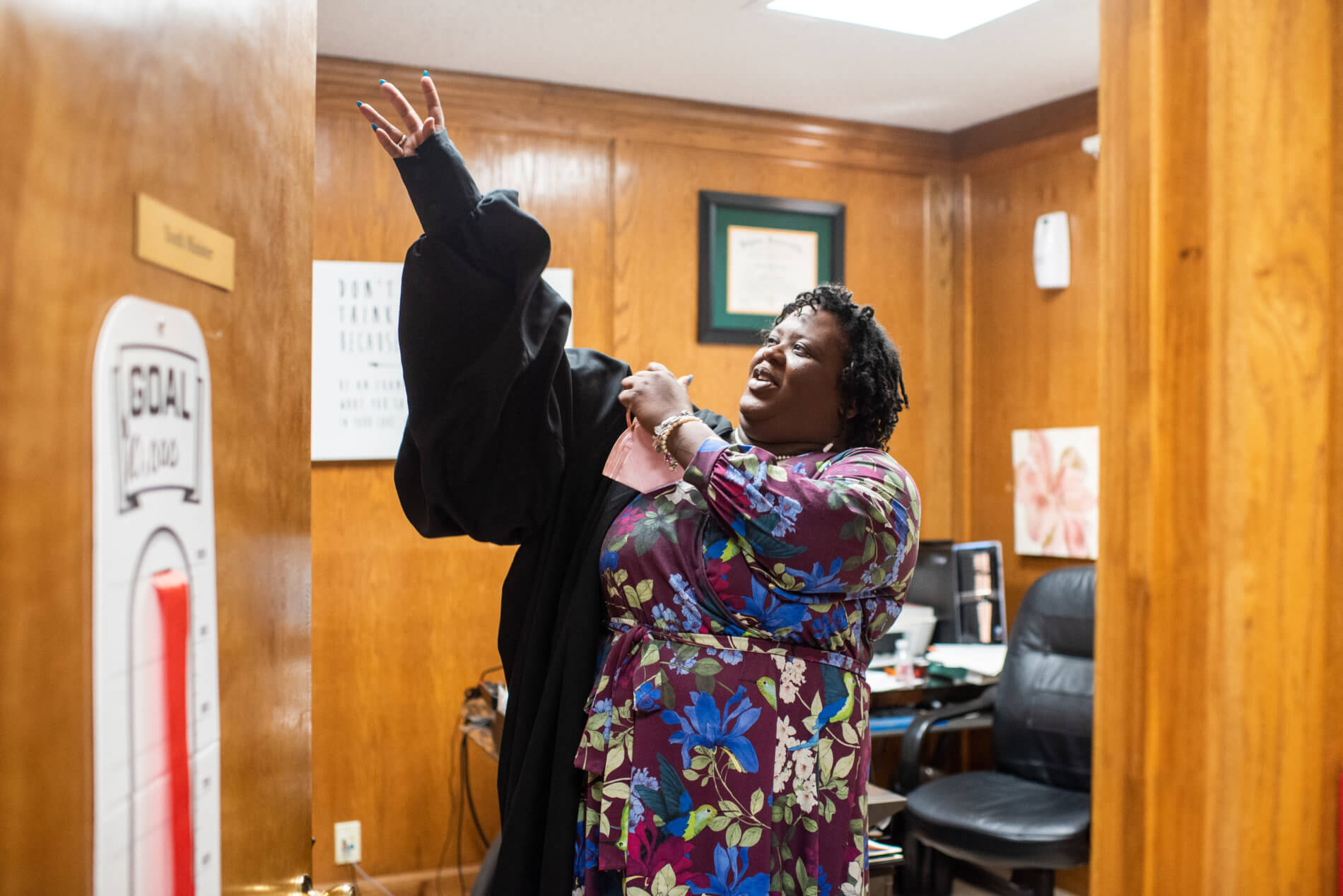
San Antonio is one of the fastest-growing cities in the United States. It is also one of the most economically segregated.
According to the most recent U.S. census, the city has the highest poverty rate of any urban area. Most of that poverty is concentrated within a few large areas, especially the parts of town known as the West Side, the South Side, and the East Side—where Kemp’s church is located.
A century ago, San Antonio’s racial and economic segregation was intentional—crafted around exclusionary policies and practices early in San Antonio’s history. Even as times have changed, local segregation has continued along the course of that early design.
The reasons for that are complex, but Kemp breaks things down this way: Every part of town has become a little town unto itself. People tend to stay in their bubble. The economic and social gaps are like walls dividing neighborhoods, she explains. Often, people’s only exposure to neighboring communities is what they see in the news—and the stories the news tells about disadvantaged communities are usually bad.
But there is a lot more to the story of these neighborhoods. “If all you’re getting is [stories of] crime and depravity and violence,” Kemp says, “that can often be your assumption of what that space is like. [You’re not hearing] about the cultural vibrancy of the area.”
Rev. Kemp’s San Antonio perspective was formed by having a foot in two worlds—two worlds inside San Antonio, spanning not only cultural differences but the entire socio-economic spectrum.
In 1988, when she was less than a year old, her family moved from Arkansas to a part of northern San Antonio called Thousand Oaks. Her father Dr. Kemp, a captain and pulmonologist in the U.S. Army, transferred to Brooke Army Medical Center—what is now San Antonio Military Medical Center.
The family has remained in that part of town, which Kemp describes as a “not quite Stone Oak … not quite northeast. We’re in that little sliver between (U.S.) 281 and (Interstate) 35 on the outside of (Loop) 1604.”
But she spent her weekends in church activities on the East Side—namely at Antioch Missionary Baptist Church. In time, her father, Dr. Kenneth R. Kemp, took on a second job outside the hospital, serving as senior pastor at Antioch since 2009.
She and her younger sister’s social activities were tied to their schools in that sliver of the northside, whether they were performing for nursing homes as members of the MacArthur High School show choir or dancing in competitions at Blossom Athletic Center. Her social circles there were primarily composed of white and Hispanic kids.
The other half of their lives resided on the East Side, where the Kemps did more than just attend church—as Kemp puts it, they found their cultural grounding.

“The East Side holds a special place,” Kemp explains. “The MLK March happens here. A lot of social organizations that I was a part of—the NAACP Youth Council—those places were here. The Barbara Jordan and the Claude Black community centers. We had a mentoring program that we came here multiple times in the week for.
“Choir rehearsal [at church]. I ate here at these kitchens. Ate at Chatman’s Chicken. Over at Fatty’s Burgers [now known as Mark’s Outing].”
Institutions like these may not have much visibility in greater San Antonio. But to Kemp, they were and are grounding institutions—places that stood apart from the majority cultures of Hispanic and white San Antonio—and where she knew she’d find people who looked like her.
“I’ve been doing this back and forth thing for about 20 years of my life,” she says.
Kemp has served as minister of children and youth at Antioch since September 2016. Upon graduating from Truett Theological Seminary at Baylor University, she has also been minister of young adults since January 2019. Now, all her time, she says, is spent at Antioch, where she’s known affectionately as Rev. Jess.
What she sees there is a rapidly changing neighborhood.
Parts of the East Side closest to downtown have been gentrifying in recent years as people from outside the space—whether from other parts of San Antonio or the rest of the country—move in and seek to renovate or replace the neighborhood’s historic housing stock. Local residents are feeling displaced at a rate of change—including property tax leaps—that is tough to keep up with.
What the newcomers lack is historical context, Kemp said. She wishes as more people move into the neighborhood, they took the time to learn the history of the East Side and get to know their neighbors.
Meanwhile, many families in the area continue to struggle to make ends meet.
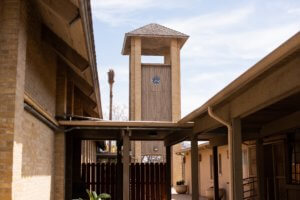
Antioch Missionary Baptist Church on the East Side of San Antonio
“Antioch is a resource center in the neighborhood,” Kemp says. “It is a place where members of the community come if they need assistance. People come literally asking for assistance to pay for their bills. We regularly receive knocks on the door.”
The church has lately been busy reforming its 501(c)(3) arm, which had languished, but “with the rising need on this end of COVID-19, we need to bring it back.”
The nonprofit allows Antioch to advocate for funds for the social services the church provides in the neighborhood: early childhood classes, parenting classes, financial courses. “We do a lot of things that are outside Sunday worship to serve our community,” says Kemp, including being a voice of advocacy for families in need across the city.
Amid these challenges, “sometimes it can be really easy to get in your silos and think you’re the only one out here doing anything,” says Kemp. She says that the Narrative Change Cohort has helped her see “that’s not the case. There are people doing stuff all over the place.
“God still has a remnant of folks actively attempting to be his hands and feet.”
